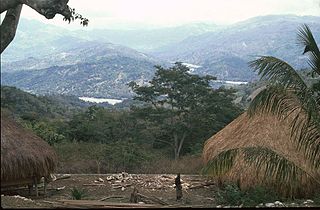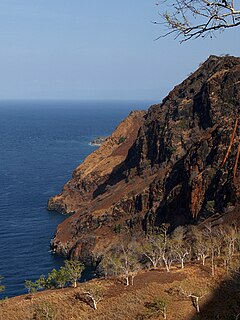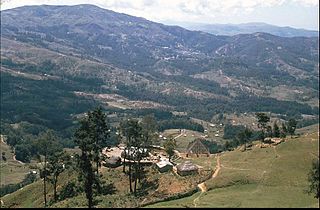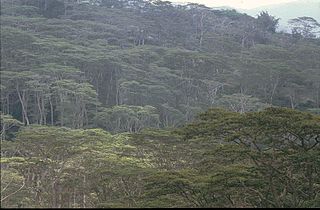This article may be expanded with text translated from the corresponding article in German. (November 2010)Click [show] for important translation instructions.
|
| Ainaro Ainaru | ||
|---|---|---|
| District | ||
Maubisse village | ||
| ||
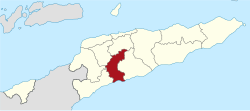 Map of East Timor highlighting Ainaro District | ||
| Coordinates: 9°05′S125°29′E / 9.083°S 125.483°E Coordinates: 9°05′S125°29′E / 9.083°S 125.483°E | ||
| Country | ||
| Capital | Ainaro | |
| Subdistricts | Ainaro, Hato-Udo, Hatu-Builico, Maubisse | |
| Area | ||
| • Total | 804 km2 (310 sq mi) | |
| Area rank | 9th | |
| Population (2015 census) | ||
| • Total | 63,136 | |
| • Rank | 10th | |
| • Density | 79/km2 (200/sq mi) | |
| • Density rank | 6th | |
| Households (2015 census) | ||
| • Total | 10,601 | |
| • Rank | 9th | |
| Time zone | TLT (UTC+09:00) | |
| ISO 3166 code | TL-AN | |
Ainaro is one of 13 administrative districts of East Timor, in the southwest part of the country. It has a population of 59,175 (census 2010) and an area of 804 km². [1] Its capital is the city of Ainaro, a small mountain town.
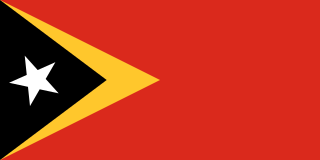
East Timor or Timor-Leste, officially the Democratic Republic of Timor-Leste, is a country in Maritime Southeast Asia. It comprises the eastern half of the island of Timor, the nearby islands of Atauro and Jaco, and Oecusse, an exclave on the northwestern side of the island surrounded by Indonesian West Timor. Australia is the country's southern neighbour, separated by the Timor Sea. The country's size is about 15,410 km2.

Ainaro is a town in East Timor, the capital of the Ainaro Municipality, and is located in the southwest part of the country. The Ainaro Subdistrict has a population of approximately 14,130 people (2001). It contains the small mountain town of Ainaro, the district capital, along with the sucos of Soro, Maununo, Cassa, Suro Craic, Manutassi, and Mau-Ulo. The town of Ainaro is located 78 km south of Dili, the national capital.
Contents
Ainaro has a great abundance of rivers and fertile terrain for agriculture. It has a coastal area, on the Timor Sea, but also mountainous zones, including the highest point in East Timor, Mount Ramelau (2,960 m), also known as Tatamailau, which lies near the border with Ermera. Historically, Ainaro played an important role during the brutal Indonesian occupation of East Timor, providing shelter for the mountain-based guerrilla resistance army. Former guerrilla leader and current President Xanana Gusmão spent many years directing the resistance from Ainaro.

The Timor Sea is a relatively shallow sea bounded to the north by the island of Timor, to the east by the Arafura Sea, to the south by Australia.

Ermera is a city in East Timor and a former capital of the East Timorese community, Ermera. Ermera in Mambai language means "red water." It has a population of 8,907. Its geographical coordinates are 8°45′8″S125°23′49″E, and it lies 1,195 metres (3,921 ft) above sea level. Ermera's center lies in the Suco of Poetete.

Indonesia, officially the Republic of Indonesia, is a country in Southeast Asia, between the Indian and Pacific oceans. It is the world's largest island country, with more than seventeen thousand islands, and at 1,904,569 square kilometres, the 14th largest by land area and the 7th largest in combined sea and land area. With over 261 million people, it is the world's 4th most populous country as well as the most populous Muslim-majority country. Java, the world's most populous island, contains more than half of the country's population.








